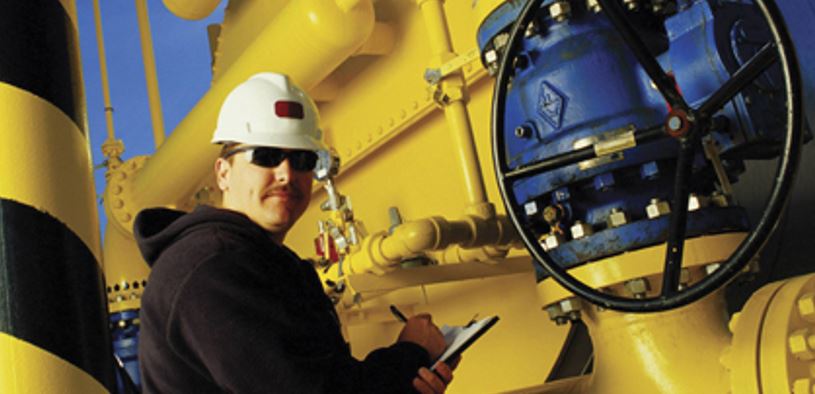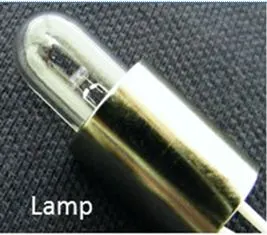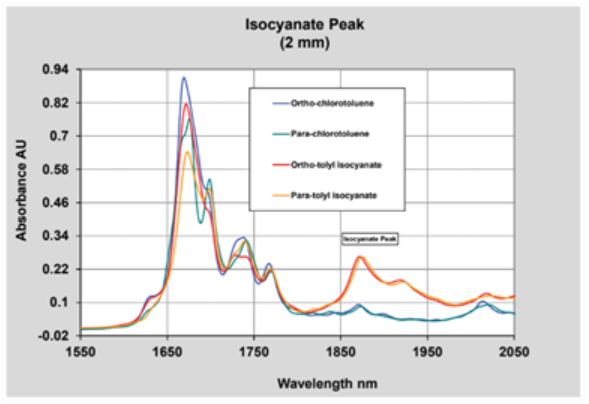Diisocyanates are a family of chemicals used to make a wide range of polyurethane products. The most widely used aromatic diisocyanates are toluene diisocyanate (TDI) and methylene diphenyl diisocyanate (MDI). Less widely used, but still important, are the aliphatic diisocyanates, including hexamethylene diisocyanate (HDI), hydrogenated MDI (H12MDI), and isophorone diisocyanate (IPDI).
• TDI is mainly used to make flexible polyurethane foam that can be found in a wide range of everyday products, including furniture, bedding, carpet underlay, and packaging.
• MDI is used primarily to make rigid polyurethane foams such as insulation boards.
Multiple process points during diisocyanate production can benefit from real-time monitoring with NIR analyzers. For example, the yield of TDI and MDI can be determined. Additionally, the concentration of water which can cause off-spec products to form in the reaction vessel can also be monitored. Once the reaction is complete, the acid number (polyol value) of the prepolymer can be monitored to ensure the product is on-spec. Determining the urethane yield can also be achieved by NIR.
During polyurethane synthesis, isocyanate is reacted with an alcohol to form a urethane. This reaction process creates the carbamate functional group which forms the links in polyurethane. Along with acid number (polyol value), NIR analyzers such as the ClearView db photometer can be used to monitor the conversion efficiency of isocyanate to urethane. By monitoring these properties with an NIR analyzer, problems can be quickly detected and corrected, and as a result reaction yields will improve.







